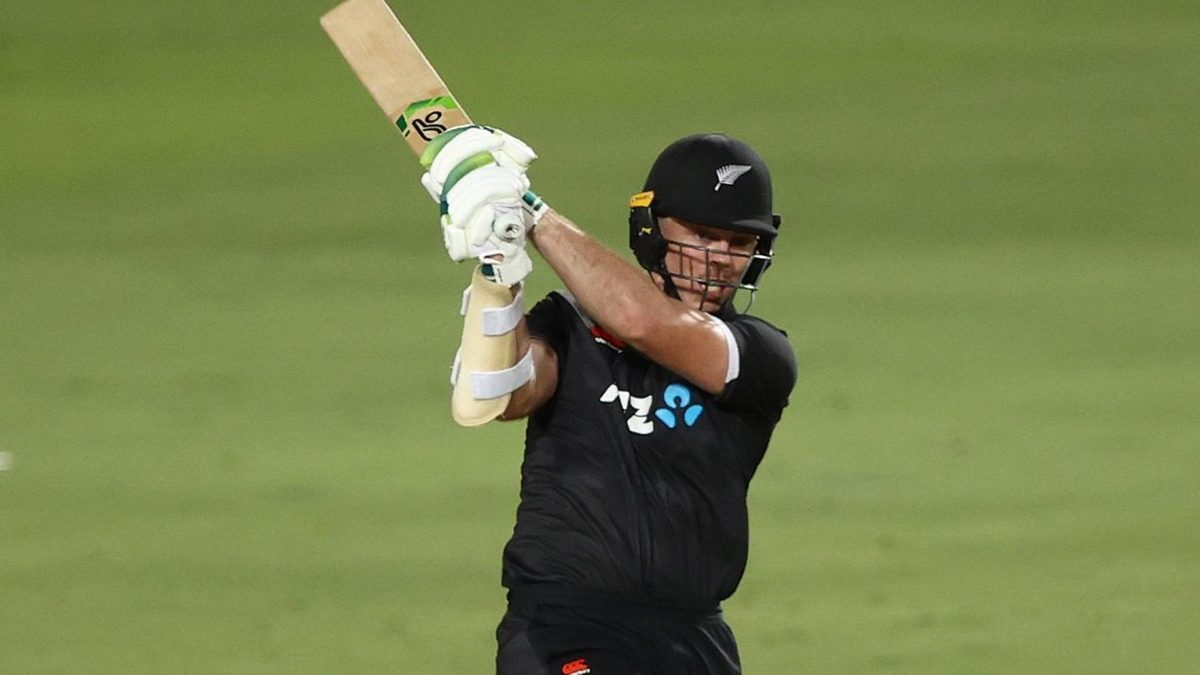
First place in Wisden’s men’s ODI innings of the year countdown, part of the 2022 in Review series, is Michael Bracewell’s 127 not out against Ireland at Malahide. Abhishek Mukherjee pays tribute to a remarkable performance.
Of the panelists, all but two put the innings at the top of their lists. The others ranked it second and third.
READ: Wisden’s men’s ODI Innings of the Year, Nos.5-2
Michael Bracewell 127* (82)
Ireland v New Zealand
The Village, Malahide, Dublin
July 10
John Bertram, the grand Bracewell patriarch, played for Rangitikei in the Hawke Cup. His sons, Douglas, Mark, John, and Brendon all played at first-class level. The last two have played Test cricket, as have Brendon’s son Douglas and Mark’s son Michael. For once, the phrase “cricket runs in the blood” is not be an exaggeration.
New Zealand’s newest Bracewell had a lowkey entry into international cricket, failing with the bat but picking up five wickets in three ODIs against the Netherlands at home. Drafted into the Test side at Trent Bridge, he smote 49 and 25 (the latter off 17 balls), and even took 3-62 in the first innings. Over the next three innings, he was Bazballed for 1-223 in 31.2 overs.
With a 45-over cut-off, his economy rate of 5.97 in the series was the worst for anyone in the history of Test cricket – but then New Zealand had picked him despite a first-class bowling average of 47.
In five international matches, thus, Bracewell had succeeded and failed with bat and ball in Tests and ODIs. Few knew what to expect of him when New Zealand picked him for the ODIs in Ireland. Keeping up with his neither-here-nor-there international career, Bracewell returned 8-0-42-0 as Ireland recovered from 26-2 to post 300-9.
The target was not expected to challenge New Zealand despite Kane Williamson’s absence: after all, were they not finalists of the last two World Cups, and lost the more recent of them by the closest possible margin?
Yet, cricket journalists around the world were looking up databases by the time Bracewell walked out at 120-5 in the 22nd over. The asking rate was 6.39, but the big guns were gone. It was left to Glenn Phillips and him… and the long tail. And Andy McBrine trapped Phillips leg-before, New Zealand were left to chase 148 from 121 balls.
The Irish supporters who were celebrating in the stands at this point – and why not? Not only was the situation dire, but the New Zealand No.8 was Ish Sodhi, a man with a batting average of under 10 across 36 ODIs. If Sodhi was the No.8, surely things could get only worse from there?
But Sodhi did not get out, and Bracewell went on the charge. Having taken 39 balls for his first 31 runs, he lofted McBrine out of the ground over long-on. Simi Singh replaced McBrine, but first Sodhi, then Bracewell hit him for sixes. Then Sodhi was run out – but not before he had extended his career highest score by a run.
Matt Henry came and went, and the target soared to 84 from 42 balls. With little to lose, Bracewell hit Josh Little for two fours – off a ramp and a deflection – before smashing a six over long-on. Lockie Ferguson (batting average seven, mind you) got a run at the other end, Bracewell shuffled across swiftly to hit Craig Young for six.
Yet, New Zealand needed 40 from three overs – with Ferguson at the crease and Blair Tickner of a three-ball ODI batting experience to follow. It was still Ireland’s game to lose.
But Ferguson’s edge ran to the boundary, and he even got the all-important single. The unperturbed Bracewell hit a six over long-on, then pushed Young’s last ball for two.
Ferguson got a single off the first ball, but at this point Mark Adair bowled a superb over, mixing his pace and varying his length, yorking Ferguson with the last ball.
New Zealand needed 20 to win the match in the last over. Young would bowl it. Tickner was there at the non-striker’s end, but only because the Laws of Cricket needed him to be. He was going to be spectator.
Twice Young bowled on off-stump. Twice Bracewell moved across the wicket. And twice he flicked Young for four.
On a small ground, Young’s best bet lay in bowling as far as possible from Bracewell, perhaps risking a wide in the process. He went the other way round, perhaps in error: this time Bracewell’s swipe soared into the stands over mid-wicket.
Young held his length back, but now Bracewell turned it towards leg for four. New Zealand needed two from two balls, and Bracewell rounded things off with a six – his seventh, to go with the 10 fours – over long-on. He finished on 127 not out from 83 balls (the sixth-highest ODI score by a No.7).
Over the years, when cricket writers of the future will sit down to list impossible chases in the ‘middle format’ of cricket, Bracewell’s name will come up, time and again. It was a special performance, but also because it typified ODIs, where batters have to optimise risks and pace innings with an eye on the wickets and another on the balls over a sustained period of time.
It was not just a great innings but also one that makes ODI cricket feel special.








